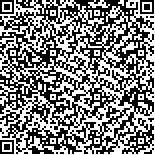| 本文已被:浏览 578次 下载 432次 |

码上扫一扫! |
|
|
| 基于“虚气留滞”理论论治腹膜透析后营养不良 |
|
郭璐萱1,2,3, 刘洋1,2,3, 郝娜1,2,3, 纪越1,2,3, 杨洪涛1,2,3
|
|
1.天津中医药大学第一附属医院, 天津 300381;2.国家中医针灸临床医学研究中心, 天津 300381;3.天津中医药大学, 天津 301617
|
|
| 摘要: |
| 基于“虚气留滞”理论探讨腹膜透析后营养不良的病机特点及治则治法。营养不良是腹膜透析最常见的并发症之一,积极地改善营养不良对提升患者的生活质量,延长生存寿命,降低并发症等方面均具有重要意义。中医认为,脏腑正气亏虚,风邪内客,痰湿阻滞,瘀血内停,浊毒内蕴为腹膜透析后营养不良的主要病机,以“虚、风、湿、痰、瘀、浊毒”作为其关键病机特点。“虚气留滞”理论是对腹膜透析后营养不良的高度概括。“心、肝、脾、肺、肾”五脏亏虚为发病的基础,由脏腑“虚气”而导致的风邪、痰湿、浊毒以及瘀血等病邪“留滞”是发病的诱因,因虚而生滞,因滞而虚甚。临床治疗应“补虚”与“祛滞”并举,通过“补肺益气,兼顾脾肾、益气健脾,养心舒肝、温肾暖脾,滋阴填精”以“补虚”,“祛风解表,搜风通络、祛湿化痰,利湿降浊,活血化瘀”以“祛滞”,以期改善营养不良。文章着重基于“虚气留滞”理论,对腹膜透析后营养不良的病机特点和治则治法进行阐述,以期为中医药在临床腹膜透析后营养不良的治疗中提供了新思路、新方法。 |
| 关键词: 虚气留滞 终末期肾病 慢性肾功能衰竭 腹膜透析 营养不良 |
| DOI:10.11656/j.issn.1672-1519.2023.07.07 |
| 分类号:R692 |
| 基金项目:国家重点研发计划“中医药现代化研究”重点专项(2019YFC1709400);国家自然科学基金青年项目(81904141);湖北陈孝平科技发展基金会2022年度免疫性疾病研究槐杞黄专项基金项目(CXPJJH122003-09)。 |
|
| Treatment of malnutrition after peritoneal dialysis based on the theory of “deficient-qi induced stagnation” |
|
GUO Luxuan1,2,3, LIU Yang1,2,3, HAO Na1,2,3, JI Yue1,2,3, YANG Hongtao1,2,3
|
|
1.First Teaching Hospital of Tianjin University of Traditional Chinese Medicine, Tianjin 300381, China;2.National Clinical Research Center for Chinese Medicine Acupuncture and Moxibustion, Tianjin 300381, China;3.Tianjin University of Traditional Chinese Medicine, Tianjin 301617, China
|
| Abstract: |
| To discuss the characteristics of the pathogenesis and treatment of malnutrition after peritoneal dialysis based on the theory of “deficient-qi induced stagnation”. Malnutrition is one of the most common complications of peritoneal dialysis. Actively improving malnutrition is of great significance to improve the quality of life of patients,prolong the life span,and reduce complications. Traditional Chinese medicine(TCM) believes that the main pathogenesis of malnutrition after peritoneal dialysis is the deficiency of vital qi of viscera,the internal regulation of wind,the blockage of phlegm dampness,the blockage of blood stasis,and the internal accumulation of turbidity and toxin. The key pathogenesis features are “deficiency,wind,dampness,phlegm,blood stasis,and turbidity and toxin”. The theory of “deficient-qi induced stagnation” is greatly generalized to malnutrition after peritoneal dialysis. The deficiency of “heart,liver,spleen,lung and kidney” is the basis of the disease,and the “stagnation” of wind-evil,phlegm dampness,turbid toxin and blood stasis caused by the “deficiency qi” of the Zangfu organs is the inducement of the disease. In clinical treatment,“tonifying deficiency” and “removing stagnation” should be carried out simultaneously,by “tonifying lung and qi,taking into account spleen and kidney,supplementing qi and strengthening spleen,nourishing heart and soothing liver,warming kidney and spleen,nourishing yin and filling essence” to “tonifying deficiency”,“dispelling wind and removing surface,clearing wind and collaterals,removing dampness and phlegm,reducing dampness and turbidity,promoting blood circulation and removing stasis” to “dispel stagnation”,so as to improve malnutrition. Based on the theory of “deficient-qi induced stagnation”,the author expounds the pathogenesis,characteristics,principles and methods of treatment of malnutrition after peritoneal dialysis,with a view to providing new ideas and methods for Chinese medicine in the treatment of malnutrition after peritoneal dialysis. |
| Key words: deficient-qi induced stagnation end stage renal disease chronic kidney faliure peritoneal dialysis malnutrition |
